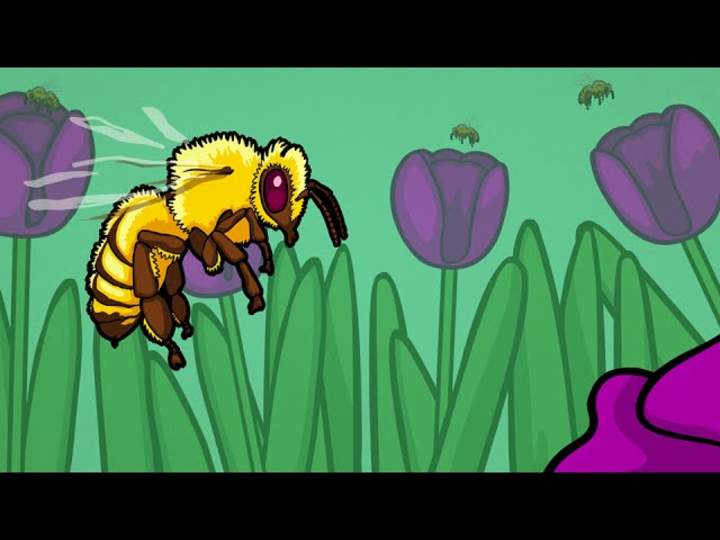If you find this animation helpful, consider supporting our work at http://statedclearly.com/contribute/
Lichen is a combination of algae and fungus (and in many cases, a third species of yeast) living together. This relationship allows the intertwined organisms to survive in locations they could never live on their own.
If evolution is all about "survival of the fittest", how does cooperation evolve? Living things form cooperative relationships all the time. Research done by applying mathematics to biology is helping us understand the evolution of cooperation. Cooperation has caused some of the major evolutionary steps in the history of life, including the step from single celled creatures to multi-cellular plants and animals.
Scientists used mathematical models to find scenarios in which natural selection will actually favor cooperation.
Sources:
Many species of fungus feed on lichen:
http://www.ncbi.nlm.nih.gov/pmc/articles/PMC4047527/
Kin selection combined with budding can give rise to cooperation:
Demography, altruism, and the benefits of budding:
http://onlinelibrary.wiley.com/doi/10.1111/j.1420-9101.2006.01104.x/abstract
Mathematical Models of cooperation:
Kin Selection: http://www.sciencedirect.com/science/article/pii/0022519364900384
Direct Reciprocation: http://www.ncbi.nlm.nih.gov/pubmed/8316296/
Indirect Reciprocation: http://www.ncbi.nlm.nih.gov/pubmed/10797005/
Network Reciprocation: http://www.nature.com/nature/journal/v433/n7023/full/nature03204.html
Five Rules for the Evolution of Cooperation:
http://www.ncbi.nlm.nih.gov/pubmed/17158317
New Discovery of a 3rd partner (yeast) in many Lichen: http://theconversation.com/lichens-may-be-a-symbiosis-of-three-organisms-a-new-order-of-fungus-named-63334
Lichen is a combination of algae and fungus (and in many cases, a third species of yeast) living together. This relationship allows the intertwined organisms to survive in locations they could never live on their own.
If evolution is all about "survival of the fittest", how does cooperation evolve? Living things form cooperative relationships all the time. Research done by applying mathematics to biology is helping us understand the evolution of cooperation. Cooperation has caused some of the major evolutionary steps in the history of life, including the step from single celled creatures to multi-cellular plants and animals.
Scientists used mathematical models to find scenarios in which natural selection will actually favor cooperation.
Sources:
Many species of fungus feed on lichen:
http://www.ncbi.nlm.nih.gov/pmc/articles/PMC4047527/
Kin selection combined with budding can give rise to cooperation:
Demography, altruism, and the benefits of budding:
http://onlinelibrary.wiley.com/doi/10.1111/j.1420-9101.2006.01104.x/abstract
Mathematical Models of cooperation:
Kin Selection: http://www.sciencedirect.com/science/article/pii/0022519364900384
Direct Reciprocation: http://www.ncbi.nlm.nih.gov/pubmed/8316296/
Indirect Reciprocation: http://www.ncbi.nlm.nih.gov/pubmed/10797005/
Network Reciprocation: http://www.nature.com/nature/journal/v433/n7023/full/nature03204.html
Five Rules for the Evolution of Cooperation:
http://www.ncbi.nlm.nih.gov/pubmed/17158317
New Discovery of a 3rd partner (yeast) in many Lichen: http://theconversation.com/lichens-may-be-a-symbiosis-of-three-organisms-a-new-order-of-fungus-named-63334
Video
Enlace externo
Descripción
How does cooperation evolve?
Clasificaciones
Formato
Cursos / Niveles
Asignaturas / Ambitos
Eje
Licenciamiento
Licencia Youtube
Objetivos de aprendizaje del recurso
Objetivo de aprendizaje CN1M OA 04Basal CN1M OA 04
Investigar y explicar cómo se organizan e interactúan los seres vivos en diversos ecosistemas, a partir de ejemplos de Chile, considerando:
- Los niveles de organización de los seres vivos (como organismo, población, comunidad, ecosistema).
- Las interacciones biológicas (como depredación, competencia, comensalismo, mutualismo, parasitismo).
